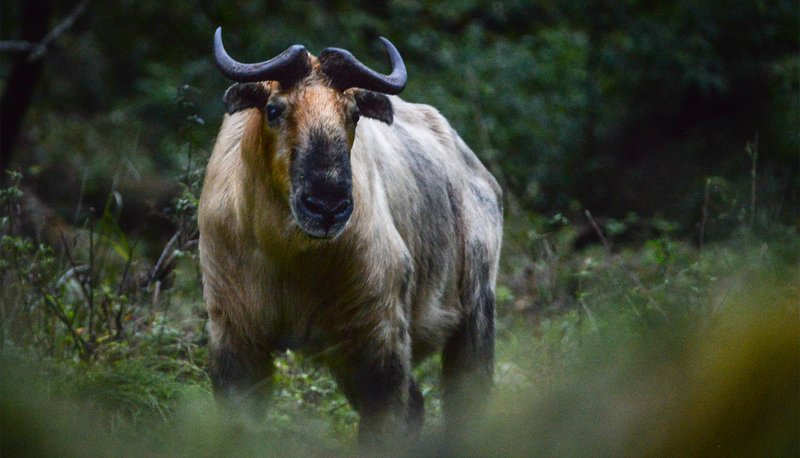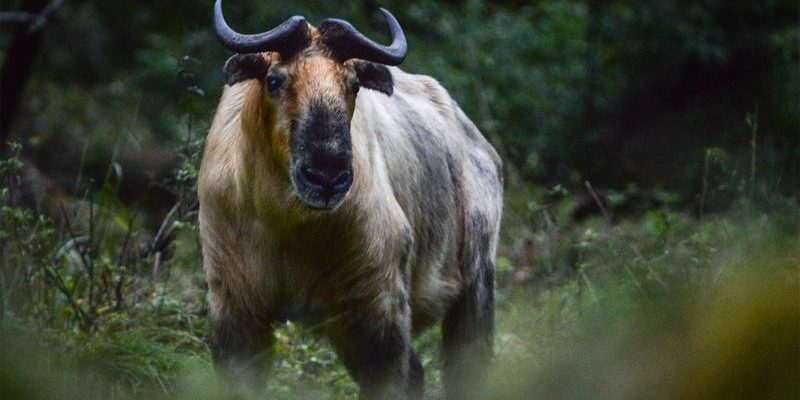
You might not have heard about the Takin, but this fascinating creature deserves a spot in your mental zoo. Imagine a cross between a goat, an antelope, and a bison, and you’re pretty close to what a Takin looks like. These hefty animals roam the rugged mountains of Asia, where they navigate steep cliffs and dense forests with surprising grace. They’re unique not just in appearance, but also in their behaviors and habitats.
Their body is robust, covered in a thick, shaggy coat that helps them endure harsh weather. Adult Takins can weigh between 300 and 700 pounds, making them quite impressive. They have this distinctively rugged look, with a large head, stout legs, and a powerful build. You’ll often find them hanging out in small groups, known as herds, which can include up to 20 members. They’re social creatures, much like humans, who thrive when they have company.
Habitat of the Takin
Takins are primarily found in the mountainous regions of Central Asia, particularly in countries like Bhutan, Nepal, and China. They prefer habitats that are a mix of forests and grasslands, often at elevations between 3,000 and 15,000 feet. These high-altitude areas provide the cover and vegetation they need to thrive. The dense forests give them shelter from potential predators, while the open spaces allow for easy grazing.
During the winter months, Takins may migrate to lower elevations to escape the harsh snow and cold. In summer, they venture back up to the higher altitudes where food is more plentiful. Isn’t it amazing how these animals adapt to their environment? They’re like nature’s mountain climbers, expertly navigating rocky terrains in search of food.
Physical Characteristics
Now, let’s talk about how to identify a Takin. They are large, with males generally being bigger than females. An adult Takin can stand up to 3.5 feet tall at the shoulder and can reach about 6.5 feet in length. Their impressive weight can make them seem a bit clumsy, but don’t be fooled! They’re incredibly agile when they need to be.
One striking feature is their horns. Males have long, curved horns that can grow up to 30 inches long. These horns are not just for show; they are used to establish dominance during mating season or when competing for food. Their coat is another interesting aspect, often appearing in shades of golden-brown or dark brown. This thick fur not only keeps them warm but also helps them blend into their surroundings—a handy trick against predators.
| Characteristic | Description |
|---|---|
| Size: | Up to 3.5 feet tall at the shoulder, 6.5 feet long |
| Weight: | 300 to 700 pounds |
| Horns: | Males have curved horns up to 30 inches long |
| Habitat: | Mountainous regions of Central Asia, elevation 3,000 to 15,000 feet |
| Diet: | Herbivorous, feeding on grass, leaves, and shrubs |
| Social structure: | Typically found in small herds of up to 20 |
Diet and Feeding Habits
Speaking of diet, Takins are herbivores. They graze on a variety of plants, including grasses, leaves, shrubs, and even the bark of trees. Their specialized stomachs allow them to digest tough plant material efficiently. Imagine having a multi-chambered digestive system just like a cow—pretty neat, right?
Interestingly, Takins have a knack for finding the best nutrition available. They’ll often choose the freshest, most nutrient-rich plants, and this selective feeding helps them maintain their hefty bodies. They spend a lot of time munching throughout the day, so it’s not uncommon to see them in groups, all happily grazing together. It’s like a buffet in the mountains!
Behavior and Social Structure
Takins are social animals, preferring to live in small herds. This social structure helps protect them from predators like leopards and wolves. When danger approaches, they often band together to defend themselves. You’ll find them engaging in playful activities, especially the younger ones, who seem to possess an endless supply of energy. They’ll head-butt each other or engage in mock battles, showcasing their strength and agility.
During the mating season, males will become quite competitive as they vie for the attention of females. They’ll display their impressive horns and engage in displays of strength. The winner earns the right to mate, so there’s a lot at stake! After a gestation period of about eight months, females give birth to a single calf, which they care for diligently.
Conservation Status
Sadly, the Takin faces threats from habitat loss and hunting. As humans encroach on their natural environments, these incredible creatures are losing their homes. In addition, poaching for their meat and horns has significantly reduced their populations in certain areas. This is where conservation efforts come into play. Various organizations are working hard to protect the habitats and ensure the survival of Takins.
Many countries have established protected areas, recognizing the importance of safeguarding these animals. By preserving their natural habitats, conservationists aim to create a future where Takins can thrive. It’s a continuing battle, but one that many are committed to fighting. You can be part of this effort by learning about Takins and supporting wildlife conservation organizations.
FAQ
Where can I find Takins in the wild?
Takins are primarily located in the mountainous regions of Bhutan, Nepal, and China. They thrive in forests and grasslands at high altitudes, typically between 3,000 and 15,000 feet. If you’re hoping to see one, consider exploring protected national parks in these areas, where Takins are more likely to be found.
What do Takins eat during winter?
During winter, Takins primarily feed on the woody vegetation available at lower altitudes. They graze on shrubs and tree bark when grass is scarce. Their strong digestive system allows them to break down tough plant materials, giving them the nutrients they need to stay healthy even in harsh conditions.
Are Takins endangered?
Takins are currently classified as “Vulnerable” by the International Union for Conservation of Nature (IUCN). Their populations are declining due to habitat loss and poaching. Conservation efforts are crucial in protecting these magnificent animals and ensuring they remain a part of our natural world.
Can Takins be kept as pets?
Keeping a Takin as a pet is not advisable. They are wild animals that require vast spaces and specific diets. Moreover, they have complex social needs that can’t be met in a domestic setting. It’s best to admire them in their natural habitats or in accredited zoos, where they can be properly cared for.
How do Takins cope with cold weather?
Takins have thick, shaggy coats that insulate them against freezing temperatures. This fur not only keeps them warm but also helps them blend into their rocky surroundings. During colder months, they may migrate to lower altitudes where the weather is milder, allowing them to find food more easily.
What are some unique behaviors of Takins?
Takins display various unique behaviors, particularly during social interactions. They engage in play fighting, especially the younger members, which helps them develop skills for adulthood. Males also compete for dominance during the mating season by showcasing their horns and engaging in head-butting contests.
How long do Takins live in the wild?
In the wild, Takins can live up to 10-15 years, but this lifespan can be affected by environmental factors and predation. In captivity, with proper care and no threats, they may live longer, showcasing their resilience in various circumstances.

